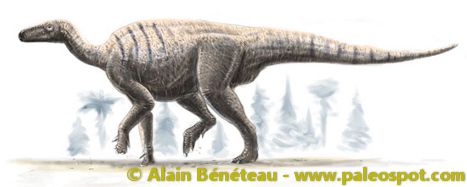-
 Galliformes
Galliformes
-
 Adsorptivity
Adsorptivity
-
 Tarsus
Tarsus
-
 Mars
Mars
-
 Photochemical pollution
Photochemical pollution
-
 Tubal ligation
Tubal ligation
-
 Cardia
Cardia
-
 Glial cells
Glial cells
-
 CEPT
CEPT
-
 Videotex
Videotex
-
 Trisomy
Trisomy
-
 Thalamus
Thalamus
-
 Circuit routing
Circuit routing
-
 Core 2 Duo
Core 2 Duo
-
 Thermoplastic
Thermoplastic
-
 Public key
Public key
-
 M15
M15
-
 Crossover
Crossover
-
 Blue Car
Blue Car
-
 Airfoil surface
Airfoil surface
-
 Mucosa
Mucosa
-
 Imidazoles
Imidazoles
-
 Reverse genetics
Reverse genetics
-
 Homeotherm
Homeotherm
-
 Fumarole deposits
Fumarole deposits
-
 Lazarus taxon
Lazarus taxon
-
 Xylophagy
Xylophagy
-
 Lock
Lock
-
 Somite
Somite
-
 Wing fairing
Wing fairing
Iguanodon
The second dinosaur ever discovered, the Iguanodon roamed the lands of Europe and Asia during the lower Cretaceous. The most well known species is Iguanodon bernissartensis, thanks to the discovery of about 26 nearly complete skeletons in the famous Bernissart mine in Belgium. The genus Iguanodon is currently being redefined. Some species now have other names: Barilium, Dollodon, Hypselospinus, Torilion, Wadhurstia…
In any case, these different species are characterised by a size of approximately 6 to 11 metres long, shorter front limbs than hind limbs, and a thumb with a large claw which was believed to be a horn during the first reconstructions. Some species were mostly bipeds, others were quadrupeds.
Since the 1970s, they are depicted horizontally, the "kangaroo" posture of previous reconstructions not being compatible with them being able to keep their balance when moving.

Reconstruction of an Iguanodon. © Alain Bénéteau
Latest
Fill out my online form.



